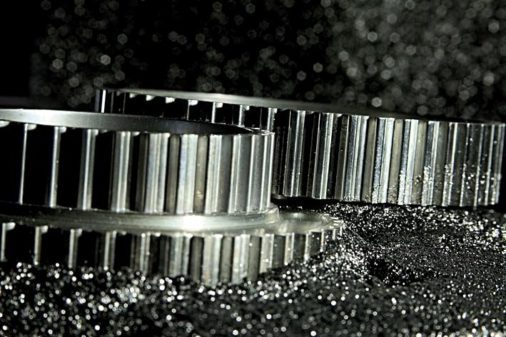Stearic Acid

Stearic acid, or octadecanoic acid (C17H35CO2H), according to the IUPAC (International Union of Pure and Applied Chemistry) is a saturated fatty acid whose name comes from the Greek word στέαρ “stéar” which means sebum, and is the most abundant fatty acid in nature after palmitic acid. This acid is also known as stearin.
It is an economical raw material because of its abundance in nature, and as it is totally innocuous this makes it a product widely used in cosmetics, pharmacy, plastic, soaps and many industries.
It is obtained by the hydrolysis of different vegetable and animal oils and fats. In Mateos, S.L. we supply plant and animal stearic acid.
Stearic acid supply formats
- Liquid – Tank
- Solid – By sack and in bulk (Big Bags 500/600kg)
- 20′ or 40′ containers for export
We also customize, supplying by: granulometry, colour, iodine index, etc.
Do you need stearic acid?
Click the box to contact us and we will get in touch with you as soon as possible..

Some applications of stearic acid

EXTRUDERS – PLASTIC
When adding between 0.3-1.0% stearic acid to the mixture in the feed hopper, this acts as a solid lubricant, staying stable at high temperatures and improving the following aspects in manufacturing;
· Product homogeneity
· Hot spots
· Energy consumption
· Saves on raw materials
RUBBER INDUSTRY/TYRES
Stearic acid is used in the tyre industry, as well as rubber, in different concentrations with other substances to control flexibility or other properties in the final product.
Stearic acid accelerates the vulcanization process.


RUBBER INDUSTRY/TYRES
Stearic acid is used in the tyre industry, as well as rubber, in different concentrations with other substances to control flexibility or other properties in the final product.
Stearic acid accelerates the vulcanization process.

TREATMENT OF SURFACES – WAXES
The liquid stearic acid or molten solid can be melted down and used for surface treatment on machine parts and materials in order to avoid rusting, caking, adhesions or absorbing moisture.
It is also used in combination with waxes and resins to improve the protection of the properties of raw materials and final products. The “fatty” part of stearic acid repels water and creates an insulating layer over the product.
SINTERING – POWDER METALURGY
Stearic acid is mixed as a lubricant additive together with metallic powder. The proportion of the lubricants varies from 0.5% to 5.0% in weight.
In the compacting phase in the press, the lubricants improve the flow and compressibility characteristics; the binders have the opposite effect. The different amount of the two additives influences the porosity and final properties of the material.
Finally, the additives are volatilized from the part “in green” in the oven sintering process, after compacting in the press.


SINTERING – POWDER METALURGY
Stearic acid is mixed as a lubricant additive together with metallic powder. The proportion of the lubricants varies from 0.5% to 5.0% in weight.
In the compacting phase in the press, the lubricants improve the flow and compressibility characteristics; the binders have the opposite effect. The different amount of the two additives influences the porosity and final properties of the material.
Finally, the additives are volatilized from the part “in green” in the oven sintering process, after compacting in the press.

DDETERGENTS AND SURFACTANTS
We provide stearic acid as raw material for other industries that manufacture these products.
It is used to control the acidity in very alkaline soaps and acts as an emulsifier, providing hardness to the mixture. It is also used in softeners.
COSMETICS AND PAINTS
Stearic acid has good properties as an emulsion, a stabilizer and a thickener. It also gives cosmetics a soft and refreshing touch to the skin.
A curious application is that of being one of the raw materials in plasticine, together with calcium stearate.


COSMETICS AND PAINTS
Stearic acid has good properties as an emulsion, a stabilizer and a thickener. It also gives cosmetics a soft and refreshing touch to the skin.
A curious application is that of being one of the raw materials in plasticine, together with calcium stearate.

CANDLE MANUFACTURE
Stearic acid is used by candle producers in some applications:
- A small dose of stearic acid in the candle mixture also seals in the candle’s perfume for a longer time, preventing the aromas from migrating.
- The addition of amounts of stearic acid together with paraffin and the rest of the products, is used to alter the melting point of the candle. This serves to improve its properties when stored with heat or to maintain the shape of the candle when lighting them.
- Stearic acid also helps improve the appearance and opacity of candles.
PHYTOSANITARY PRODUCTS – REPELLENT
In some formulations it is used as a repellent for rodents and other animals that can affect crops and plants.
Stearic acid, in nature, is produced by the decomposition or break down of animal fats, which these animals associate with death and putrefaction, thus keeping their distance.


PHYTOSANITARY PRODUCTS – REPELLENT
In some formulations it is used as a repellent for rodents and other animals that can affect crops and plants.
Stearic acid, in nature, is produced by the decomposition or break down of animal fats, which these animals associate with death and putrefaction, thus keeping their distance.

PYROTECNICS
It is used as a coating for metallic powders to prevent oxidation and to store them for long periods of time.
This insulating property is also used in hygroscopic solids to prevent them from absorbing moisture, while improving their useful life.
